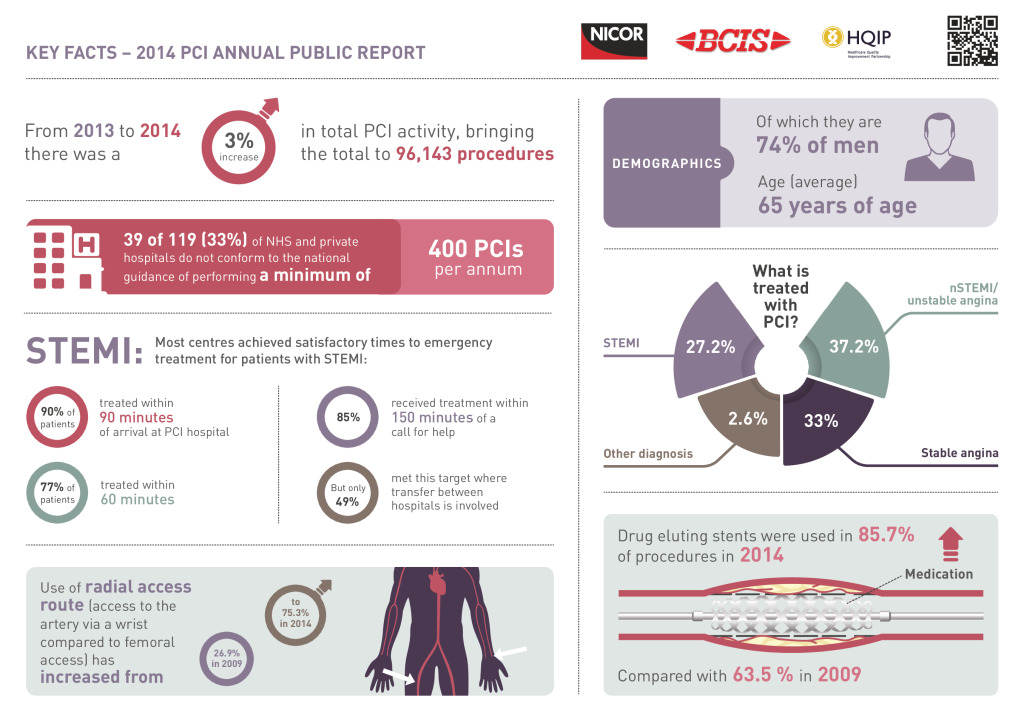National Audit of Percutaneous Coronary Intervention – Key facts summary
A 48% increase in the use of procedure associated with fewer complications is good news for cardiac patients
The latest audit from the National Audit of Percutaneous Coronary Intervention (PCI) shows an increase from 26.9% to 75.3% in the use of a safer method of PCI (angioplasty) between 2007 and 2014.
The PCI procedure, which involves inserting a tube or catheter into the patient’s arterial system to reach the locked artery in order to improve blood flow, is associated with fewer complications if carried out through the radial artery in the wrist rather than the femoral artery at the top of the leg. The significant increase has been seen in the use of the safer radial access procedure.
Peter Ludman, Consultant Cardiologist and Clinical Audit Lead said:
“The impressive increase in PCI procedures with radial artery access for the treatment of STEMI shows that UK interventional cardiologists are keeping up to date with developments in their field, and changing practice in response to evidence showing lower complication rates with this method.”
The full key facts summary is available to download from this page.
View the full press release here


